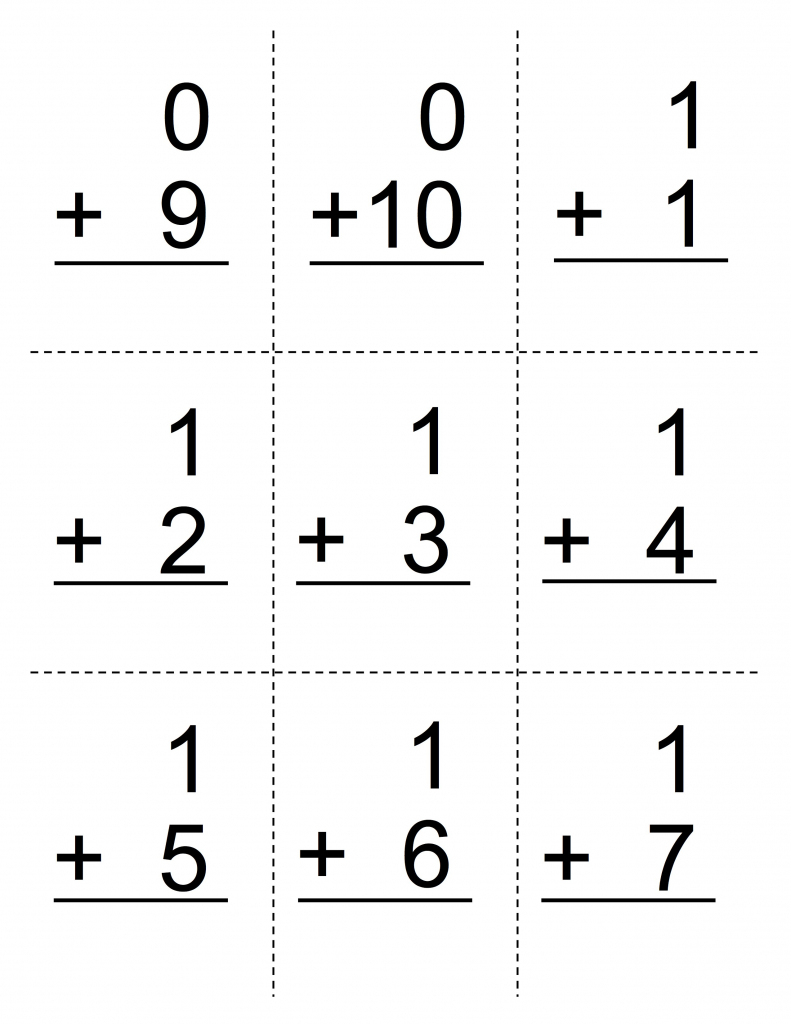

Struggling students will greatly benefit from even five minutes of daily exercise, compared to no or irregularly scheduled practices. Math fluency requires plenty of good practice and work. Find ways to make flashcard activities fun so that even self-review yields satisfactory results. Creativity and connecting learning to other skills help the math facts stick longer. Let children say aloud the facts in repetition. Children with multiple choices do not learn because their brains are not challenged to get the answer. Help children use mental strategies to retrieve the correct answer before blurting any number. Spending a long time in one to two problems at a time is okay. And to achieve math fluency with the use of flashcards, here are some tips:Ī student’s short-term memory can only hold 3 or 4 things, so introducing all the math facts in one go is ineffective. Tips for using Addition and Subtraction Flashcardsįlashcards are meant to aid children in mastering addition and subtraction to build fluency. Use illustrations to represent addition and subtraction problems Fluent in adding and subtracting within 5 Add and subtract within 10 Decompose numbers less than or equal to 10 (3= 2+1, 8= 4+4) Create 10 using any number from 1-9įluent in adding and subtracting within 10 Add and subtract within 20 Can determine the unknown number in an addition or subtraction equationįluent in adding and subtracting within 20 Add and subtract within 100 Can find the total of up to 5 rows and columns of addends In this section are tips and reminders on choosing grade-appropriate flashcards and games according to CCSS. Guide in Choosing Addition or Subtraction Flashcards and Games This set is also great for math workshops. I recommend this set for teachers because it can be used for large groups of students. There are extra five blank cards for customized problemsįlash Cards: Addition 0-12 (Scholastic Teaching Resources)Īddition and Subtraction Practice Cards consist of 18 decks with 52 cards each.Įach card may contain an addition or subtraction problem on the front and the answer on the back.īecause the card has a minimalist design, teachers can use them to play War, Slapjack, and other math games.

Children can manage difficulty (for example, they can start adding using counters, followed by adding single digits before proceeding to double-digits or solving word problems about money and graphs).The activities are varied so children will not get bored.The answers at the back have visual aids.I highly recommend Addition Flash Cards to children from prekindergarten to third grade because: 39 triangle addition and subtraction cards.10 practice addition cards (use with counters).


It comes with 260 double-sided cards, divided into:
MATH FLASH CARDS ADDITION AND SUBTRACTION TO 20 HOW TO
In Addition Flash Cards, children learn how to add by doing vertical addition problems, using counters, and answering multiple choice addition problems. Three-Corner Flash Cards Addition and SubtractionĪrithmetic Flashcards: Addition and Subtraction 0-18ġ1 Addition Flashcards for 4 to 8 Years Old Addition Flash Cards (Think2Master) Get Ready Flash Cards Addition and Subtraction Subtraction Flashcards (Think Tank Scholar)Īddition and Subtraction Animal Flashcards GameĪddition Flash Cards All Facts Through 12 They are great for independent work, small group activities, math rotations, or class drills. Here is a quick guide on the coverage of each flashcard set. Addition and Subtraction, for example, Think Tank Scholar’s Addition and Subtraction Flashcard Set.ģ0 Addition and Subtraction Flashcards Comparison Table.Subtraction such as Merka’s Subtraction Flashcards.Addition like Think2Master’s Addition Flashcards.I selected 30 double-sided and self-correcting flashcard sets that offered plenty of practice and focused learning for children aged 4 to 8. Here are some of the best flashcards you can use for practice at home and school. Flashcards can help children practice addition and subtraction facts and do them mentally fast.


 0 kommentar(er)
0 kommentar(er)
